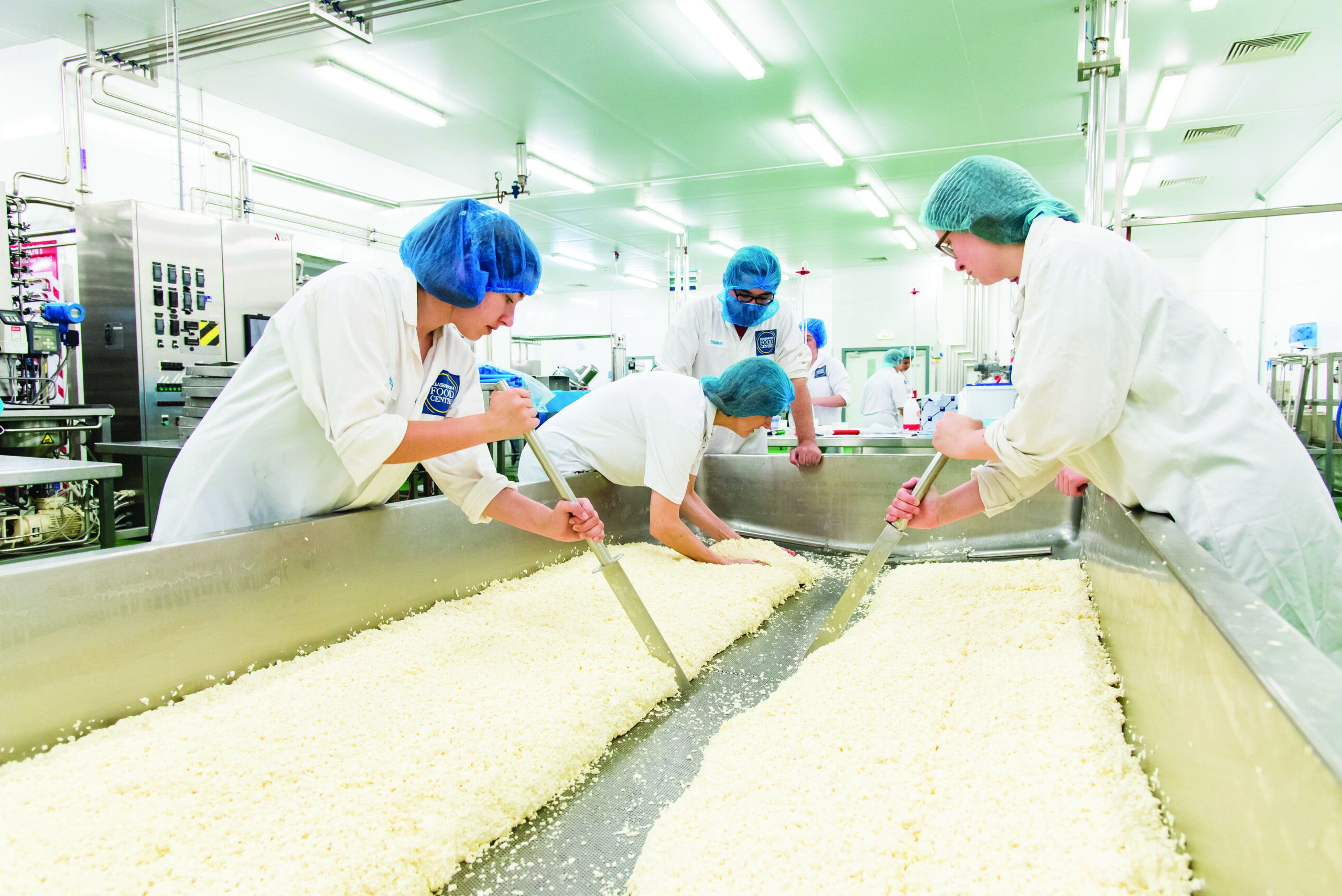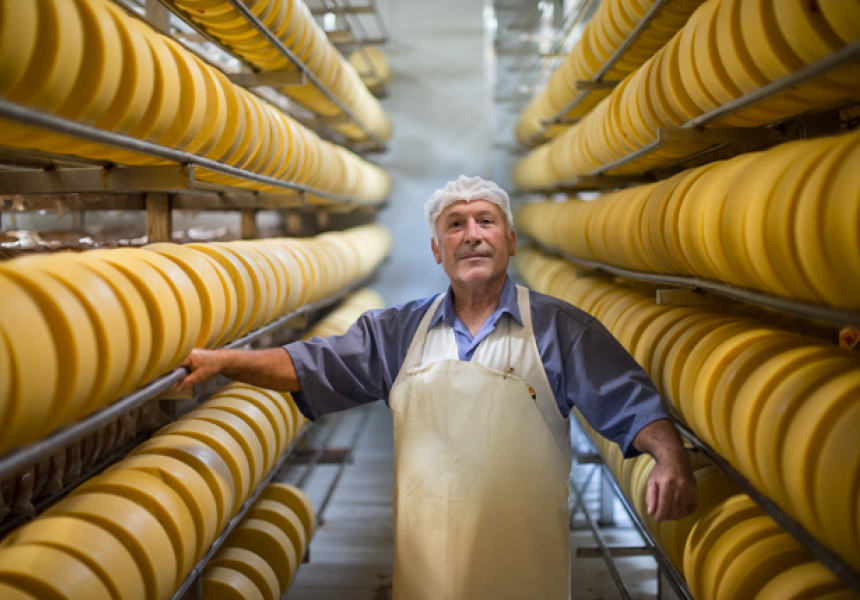Visit the Premier Cheese Store Melbourne for Gourmet Selections
Visit the Premier Cheese Store Melbourne for Gourmet Selections
Blog Article
A Thorough Look at Cheese Production: Ingredients, Approaches, and the Future of Craftsmen Cheeses
The complex process of cheese manufacturing is a fascinating merging of art and scientific research, where top quality milk, rennet, and certain bacterial cultures act as foundational aspects. Conventional techniques, such as salting and aging, are complemented by modern advancements that react to advancing consumer preferences. As the sector increasingly focuses on sustainability and transparency, the future of artisan cheeses assures to show both heritage and progress. Recognizing the nuances of these techniques increases compelling concerns about the instructions of cheese manufacturing and its ramifications for high quality and credibility. What lies ahead in this developing landscape?
Secret Active Ingredients in Cheese Production
A variety of essential components play a crucial duty in cheese production, each adding to the final product's flavor, texture, and character. The primary ingredient in cheese is milk, which can originate from various resources, consisting of cows, goats, and lamb - cheese factory melbourne. The kind of milk made use of significantly influences the cheese's preference and consistency; for example, cow's milk typically produces creamier cheeses, while goat's milk usually produces appetizing ranges
Another crucial active ingredient is rennet, an enzyme used to curdle the milk, dividing it right into curds and whey. The resource of rennet can be animal, vegetable, or microbial, each imparting unique qualities to the cheese.
Salt not only boosts the flavor however also acts as a chemical, inhibiting the growth of unwanted bacteria. In addition, different flavoring agents, such as natural herbs, seasonings, or also smoked timber, can be contributed to create one-of-a-kind artisanal cheeses. With each other, these active ingredients create the foundation of cheese production, setting the stage for varied and abundant cheese ranges.
Traditional Cheese-Making Strategies
Using traditional cheese-making strategies, craftsmens all over the world preserve time-honored methods that have been given through generations. These strategies frequently stress making use of high-quality, locally sourced milk, which is main to the distinct flavors and structures of artisanal cheeses. The procedure generally starts with the careful home heating of milk, followed by the addition of societies and rennet to promote coagulation.
As soon as the curds form, they are cut, enabling whey to drain, a vital action that influences moisture material and appearance. The curds are then carefully mixed and prepared to achieve the preferred firmness. Later, they are drained and pushed right into mold and mildews. Salting is a crucial element of this procedure, enhancing taste while also acting as a chemical.
Aging, or affinage, is an additional important part, during which cheeses establish their characteristic aromas and preferences. Artisans may employ particular maturing environments, utilizing humidity and temperature level controls to refine celebrity's profile. The dedication to these standard approaches not only supports regional economies however also adds to the abundant diversity of cheese selections discovered worldwide, commemorating social heritage and artisanal workmanship.
Modern Developments in Cheese Production
How have technological innovations changed cheese production in current years? The combination of contemporary innovation has actually revolutionized both the efficiency and quality of cheese production.
In addition, advancements in microbiology have made it possible for Read Full Article cheesemakers to choose details bacterial societies and enzymes, optimizing taste profiles and boosting rack life. The usage of sensing unit modern technology for checking fermentation problems has additionally ended up being common, enabling for real-time modifications to maintain optimum environments for cheese aging.

These innovations not only boost the high quality and sustainability of cheese production but also empower craftsmen manufacturers to preserve typical tastes while welcoming modern-day effectiveness. As innovation remains to evolve, the future of cheese manufacturing looks appealing, mixing practice with development.
The Function of Terroir in Cheese
In the world of cheese production, terroir plays a crucial role in defining the distinctive qualities of different cheeses. Terroir, a French term traditionally linked with wine, includes the ecological factors that affect farming items, including soil make-up, climate, and local flora and animals. In cheese-making, the one-of-a-kind qualities of the region where the milk is sourced can impart specific tastes and structures to the final item.
For example, the grazing conditions of dairy products animals dramatically affect the milk's make-up, affected by the kinds of grasses and natural herbs available in a particular place. This differs not only between nations yet additionally between areas within the same country. Additionally, the microbial neighborhoods existing in the atmosphere contribute to the fermentation procedures, bring about varied profiles in taste and scent.
Cheeses such as Roquefort, Parmigiano-Reggiano, and Cheddar exemplify how terroir can shape their identities, making them distinctive and commonly protected by geographical indications. As producers progressively acknowledge the click to investigate significance of terroir, there is a growing focus on sourcing local components and preserving typical practices, guaranteeing that each cheese genuinely reflects its beginning.

Future Trends in Artisan Cheeses
A go to the website notable shift is occurring in the craftsmen cheese market, driven by progressing customer preferences and technological improvements. Increasingly, consumers are moving toward unique, top quality products that highlight both sustainability and regional sourcing - cheese for sale online. This pattern is triggering artisan cheesemakers to innovate, focusing on small-batch manufacturing and making use of standard techniques while incorporating modern-day innovation to improve quality and safety
In addition, there is an expanding interest in plant-based and alternate dairy products, pushing traditional cheesemakers to explore new methods, such as cashew or almond-based cheeses. This shift not just provides to dietary constraints yet also aligns with environmental worries relating to pet agriculture.
Additionally, openness in sourcing and production processes is becoming critical. Customers are a lot more enlightened and demand traceability, prompting producers to adopt more clear labeling methods and take part in narration that highlights their approaches and values.
Conclusion
In conclusion, the elaborate process of cheese manufacturing combines traditional methods with modern advancements, causing a diverse variety of flavors and appearances. The focus on top notch ingredients and the impact of terroir underscore the virtuosity associated with cheese manufacturing. As the industry develops, a concentrate on sustainability and transparency will likely form the future of artisan cheeses, dealing with a progressively critical customer base that values credibility and workmanship in milk items.
Report this page